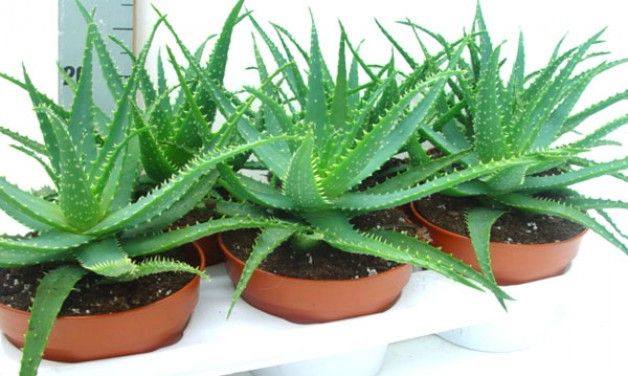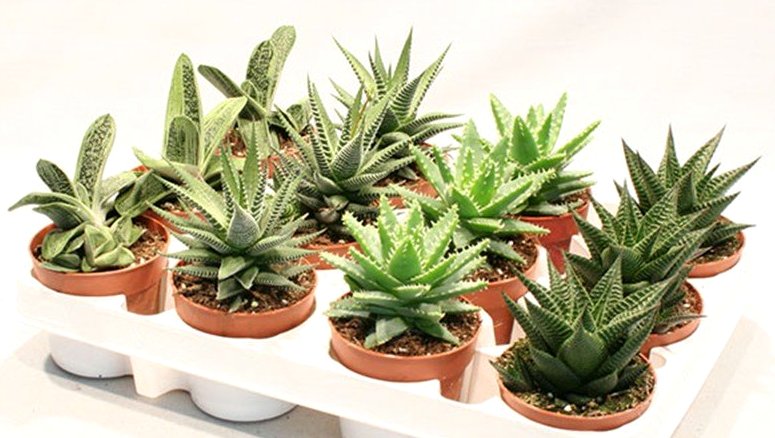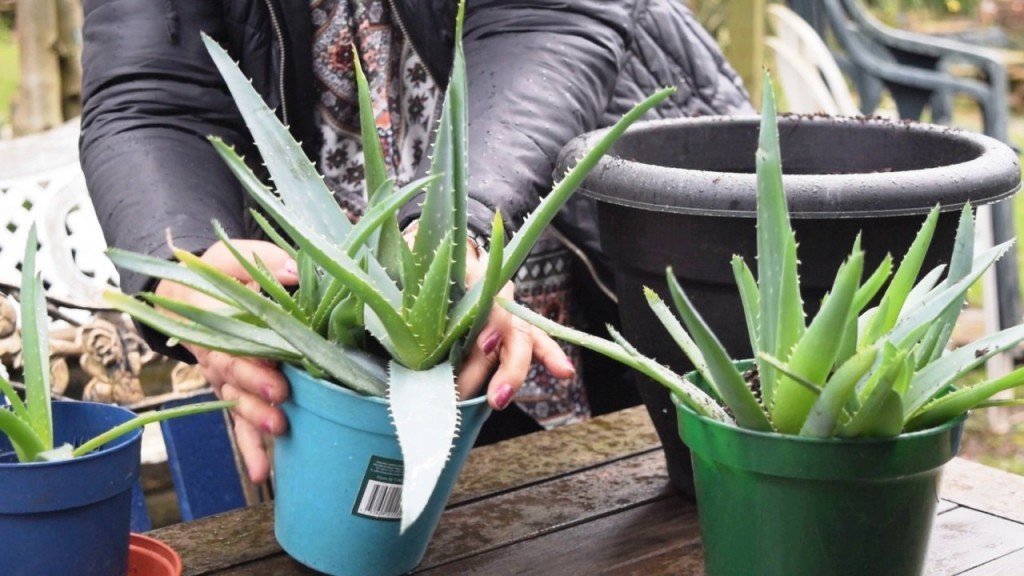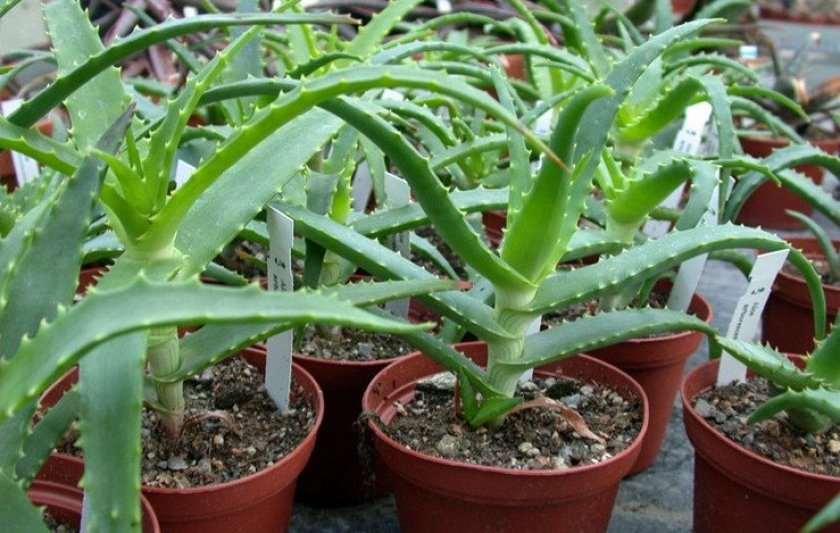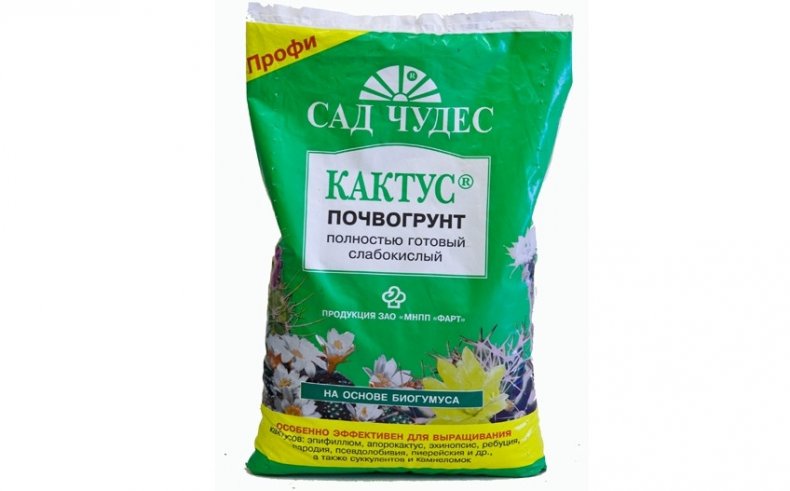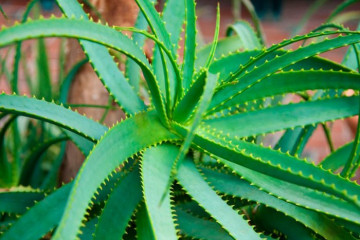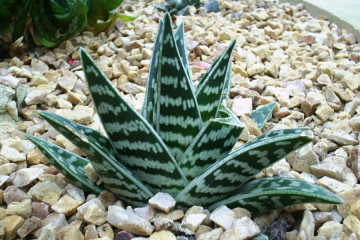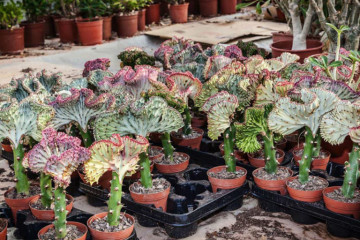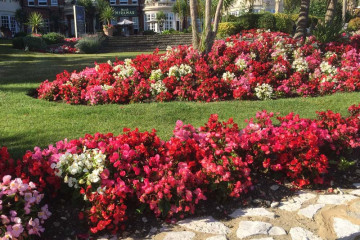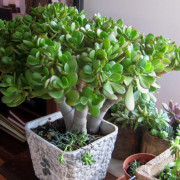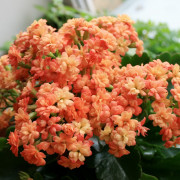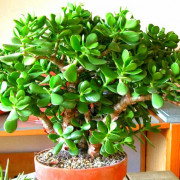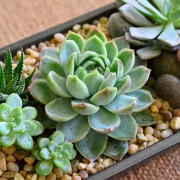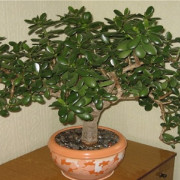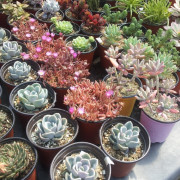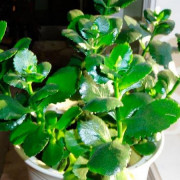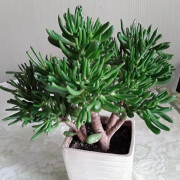Aloe flower - what it looks like, types and care
Content:
Aloe is a genus of plants in the succulent group, easily recognizable by its sharp, fleshy leaves with thorns at the edges. Sizes range from miniature specimens to arboreal and even lianas, which are commonly found in the wild. Their natural habitat is the tropics: arid regions of Africa, Madagascar, the Arabian Peninsula, where the medicinal properties of aloe vera were known 3000 years ago.
Aloe varieties
The genus aloe belongs to the Asphodelaceae family and is one of the most numerous, numbering over 500 species. Among them there are many, both decorative and medicinal varieties, sometimes both of these qualities are combined, making such types of aloe also useful in everyday life.
The most popular varieties:
- Aloe arborescens, or agave, is one of the most popular home-grown species. It is mainly used to combat non-healing purulent wounds, skin irritations, and stomach problems.
- Aloe vera (Aloe vera) - does not lag behind the agave neither in the number of useful properties, nor in the frequency of appearance in kitchens and windowsills. Visually differs from aloe tree with small white specks on the leaves and a shorter stem.
- Aloe variegated (Aloe variegata), or tiger - captivates with its original appearance, namely striped leaves (for which the plant got its second name) and unusual structure of the rosette - it looks as if the leaves are embedded in each other, which creates the effect of orderliness.
- Aloe ciliaris (Aloe ciliaris) is the only species among ornamental relatives that is an ampelous culture. Thin, branched stems and relatively soft leaves make it suitable for growing in pots.
- Opposite-leaved aloe (Aloe suprafoliata) is interesting in that over time it changes the manner of formation of the deciduous system: a young plant releases leaves in two opposite directions, resembling a book (this, by the way, explains its English name - "book aloe"), and with age forms a regular round rosette. The reddish border along the edges of the leaf is also noteworthy.
- Aloe polyphylla - The spiraling arrangement of leaves makes this squat variety of aloe an ideal gift for avid perfectionists, as it looks in its harmony even in something artificial.
- Aloe plicatilis is another work of art in a pot, its fanciful fan-shaped rosettes on either side of the stem are bent upward, creating an original recognizable shape.
The decorative value of aloe as a houseplant lies not so much in its appearance as in its simplicity in living conditions, which makes it a common choice for novice gardeners.
How to care for aloe succulents at home, general rules
To grow this plant at home, you need to familiarize yourself with the basic rules of growing and understand how to care for aloe. Absolutely all types of flowers are light and heat-loving, so the place should be chosen from the sunny side. Excellent if the windows face south or east.
However, it is worth considering that the smaller the plant, the more it needs a little shade, since in the natural environment such varieties grow in the shade of taller neighbors. It is undesirable that direct ultraviolet rays fall on the leaves, otherwise they will be covered with orange spots.
Illumination and temperature conditions
In the spring-summer season, the plant grows comfortably at normal room temperature. In winter, when the dormant period begins, it is necessary to move the aloe to a cool place (the optimum temperature at this time is 14 degrees Celsius) and, if necessary, fill the lack of natural light with a fluorescent lamp.
Watering rules and humidity
It is important not to overdo it here, because it is easier to skip watering once than to save rotting roots and deal with other unpleasant consequences. Aloe is able to retain and use the moisture stored in the leaves for a long time, so ideally it should be watered only when the top layer of the substrate dries up a few centimeters.
Depending on the size of the plant, the watering method differs:
- it is advisable to water large species from above, preventing water from entering the ground part and preventing it from stagnating in the outlet;
- small - pouring water into the pan and allowing the required amount of moisture to be absorbed.
The age of the aloe also affects the frequency of watering - the older the flower, the less water it needs compared to young, only rooting specimens.
Water quality plays an important role in home care for aloe. It is important to let it settle for at least a day: the water should not be too hard, straight from the tap. Aloe also should not be sprayed or placed under the shower. If necessary, dusty leaves should be wiped with a damp cloth.
Top dressing and soil quality
To stimulate growth and flowering, the plant needs to be fed periodically. Basic rules for fertilizing a flower:
- You should not feed the aloe immediately after transplanting: in the fresh soil there are enough micronutrients and macronutrients necessary for the plant. Fertilizers can be applied at least six months later, when their own soil reserves are depleted.
- Top dressing is carried out strictly after the soil is moistened. A weakly concentrated solution is poured into a pan or the plant is carefully watered from above so as not to burn its ground part.
- Aloe can be fertilized from early spring to mid-autumn, during a period of active growth. Once a week or two will be more than enough.
Fertilizers will not be beneficial if the wrong soil is selected. Dense soil with high acidity is a nightmare for aloe, it can react with yellowing and soon die if you do not take action (most often it is a transplant). Like all succulents, it cannot withstand the lack of access to oxygen by the roots and needs a good drainage layer. Brick chips, gravel, charcoal are well suited as baking powder.
The necessary components of the soil mixture for aloe (in a ratio of 2: 1: 1: 1, respectively):
- sod land;
- coarse sand;
- deciduous land;
- humus.
When planting a plant in new soil, make sure all three layers are in place:
- at the very bottom - a drainage layer about two centimeters thick;
- soil mixture;
- a small layer of gravel or coarse sand on top.
An excellent choice for novice gardeners will also be purchased soil, previously disinfected and enriched with all the substances necessary for the plant. It is worth taking soil for cacti and succulents. If it was not possible to find it, ordinary universal soil mixed with coarse sand in a ratio of 4: 1 is suitable.
Flower container size
In a healthy aloe plant, the rhizome is constantly growing, and over time it becomes cramped in the old pot. It is recommended to transplant the plant every few years into a larger pot, otherwise it will simply stop growing.
Flowering and dormant period of the plant
Aloe blooms at home infrequently. To wait for flowering, you need to recreate the annual cycle of the plant in conditions as close as possible to its natural habitat, providing it with impeccable care. In nature, the flowering period of aloe is up to six months. Coloring, depending on the species, varies from scarlet to pale yellow and white.
To enjoy blooming next spring, you need to prepare in advance:
- In the month of March, start feeding aloe regularly in accordance with the rules described above.
- In summer, when the nights are warm, take it out into the fresh air, gradually increasing the time spent on the veranda or balcony. Do not forget about timely watering.
- Starting from the cold snaps in September, it is necessary to stop "external forays" and place a pot of aloe on a well-lit windowsill. It is important to raise the temperature of the water for irrigation six to eight degrees above the temperature in the room.
- In winter, you need to prepare a cool and dry place for the plant where it could wait out the dormant period, so the window sill above the battery is not the best place for wintering. At the same time, the lighting level can be maintained with fluorescent lamps.
- With the arrival of spring, the temperature in the room should be increased, stimulating the awakening of the flower. At this time, it is advisable not to disturb him with any movements and turns of the pot. Watering should be done twice a week.
The aloe flower looks like a spike on a tall arrow growing from the center of the rosette, and is vaguely similar to a hyacinth flower with its many small buds. When the plant has faded, you need to remove the peduncle arrow to prevent the formation of seeds. This is a lot of stress for the aloe, and it is better to prevent depletion, but maintain care, as in preparing the plant for flowering.
Growing problems, diseases and pests
Homemade aloe is a flower that is relatively unpretentious to grow, but prone to diseases and parasites. Excessive liquid on the roots and low temperatures can provoke root rot. Its signs are quite noticeable, but the plant can be saved only at an early stage of the disease.
Of the parasites that attack the plant, the most common are spider mites and scale insects. The first of these is a millimeter parasitic insect, whose presence is often impossible to detect due to its too small size.Signs of damage are a thin cobweb and drying, yellowish leaves. You can get rid of a spider mite with the help of acaricides, but in order to prevent it, it is better not to allow the soil to dry out, since the ideal environment for this parasite is dry land and insufficiently humid air.
The scale is easily visible and looks like a wax-like plaque on the surface of the leaf. Insects multiply rapidly and form whole colonies, sticking to the pulp and inhibiting the plant's ability to photosynthesize. It is better to isolate the affected aloe from others, disinfect the pot and buy a special scabbard remedy.
Aloe (agave) is a useful and beautiful flower, caring for which at home does not require much effort, but it brings a lot of pleasure. The plant attracts not only by its appearance, but also by its powerful healing potential.
